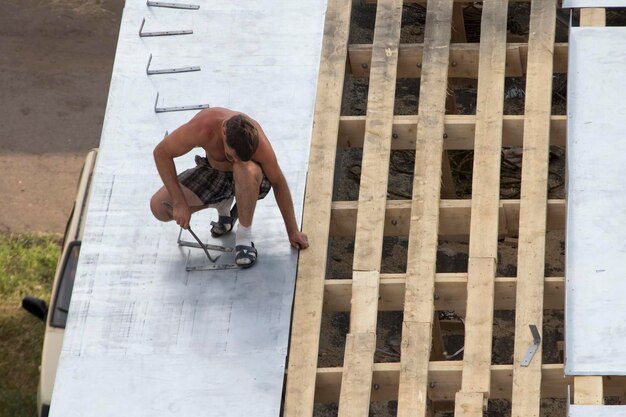Understanding Roof Sheathing: What You Need to Know
Have you ever stopped to think about the unseen elements that protect your home from the elements? While the shingles on your roof are the most visible layer, the unsung hero lying just beneath them is the roof sheathing. Without this critical component, your home simply wouldn’t be as secure. In this article, we delve into what roof sheathing is, its importance, and why getting it right is crucial for your home’s integrity.
What Is Roof Sheathing?
Roof sheathing, also known as roof decking, is the layer of material attached to the roof's trusses or rafters, providing a base for shingles and other roofing materials. This layer is typically made from plywood or oriented strand board (OSB), chosen for its strength and stability. The primary role of roof sheathing is to act as a structural base that distributes weight evenly across the roof and offers a surface to which roofing materials can be securely fastened.
Why Is Roof Sheathing Important?
The importance of roof sheathing extends beyond merely serving as an anchor for shingles. It provides several critical functions:
- Structural Support: Roof sheathing adds rigidity and structural strength to your roof, preventing it from warping or sagging over time.
- Weather Protection: It acts as a barrier against the elements, helping keep out moisture and improving the roof’s overall resistance to weather damage.
- Insulation: Proper sheathing can also contribute to better insulation, keeping your home warmer in winter and cooler in summer.
Given its importance, addressing any sheathing issues promptly is vital to maintaining your home’s durability and safety. However, concerns about costs often arise when homeowners face roof repairs or installations.
Navigating the Costs: Financial Assistance Options
Investing in quality roof sheathing isn’t just about long-term savings—it can also be a major immediate expense. Thankfully, numerous financial assistance options are available to alleviate these costs:
Government Aid Programs
Federal and state programs often offer assistance or grants to homeowners for essential repairs. Initiatives like the Department of Housing and Urban Development (HUD) can be a lifeline for maintaining your home.
Tax Incentives and Rebates
Sometimes, updating your roof sheathing can qualify you for tax incentives, especially if you're improving insulation or using eco-friendly materials. Consult a tax advisor to see if you qualify.
Loans and Financing Solutions
Many financial institutions offer home improvement loans or lines of credit specifically designed for home maintenance projects. Options such as 0% interest credit cards or personal loans might provide the flexibility you need to manage costs without stress.
Educational Grants and Community Resources
Local educational workshops and community programs can offer insights and resources for maintaining your home. They might even provide direct aid or connections to contractors who offer discounted services.
Taking steps to understand roof sheathing and how to effectively manage associated costs is crucial for both protecting and improving your home. Remember, investing in the unseen part of your roof can safeguard the visible parts of your house for years to come.
Financial Resources to Consider:
- 🏠 HUD Repair Grants: Assistance for low-income families facing home repairs.
- 🌿 Energy-Efficient Tax Credits: Potential savings for those upgrading to energy-efficient materials.
- 💳 Home Improvement Credits: Special personal loans or credit cards for covering renovation costs.
- 📚 Community Workshops: Opportunities to learn about DIY repairs and access to local aid.
- 🏢 Non-Profit Assistance: Organizations like Habitat for Humanity might offer volunteer-based repair services.
